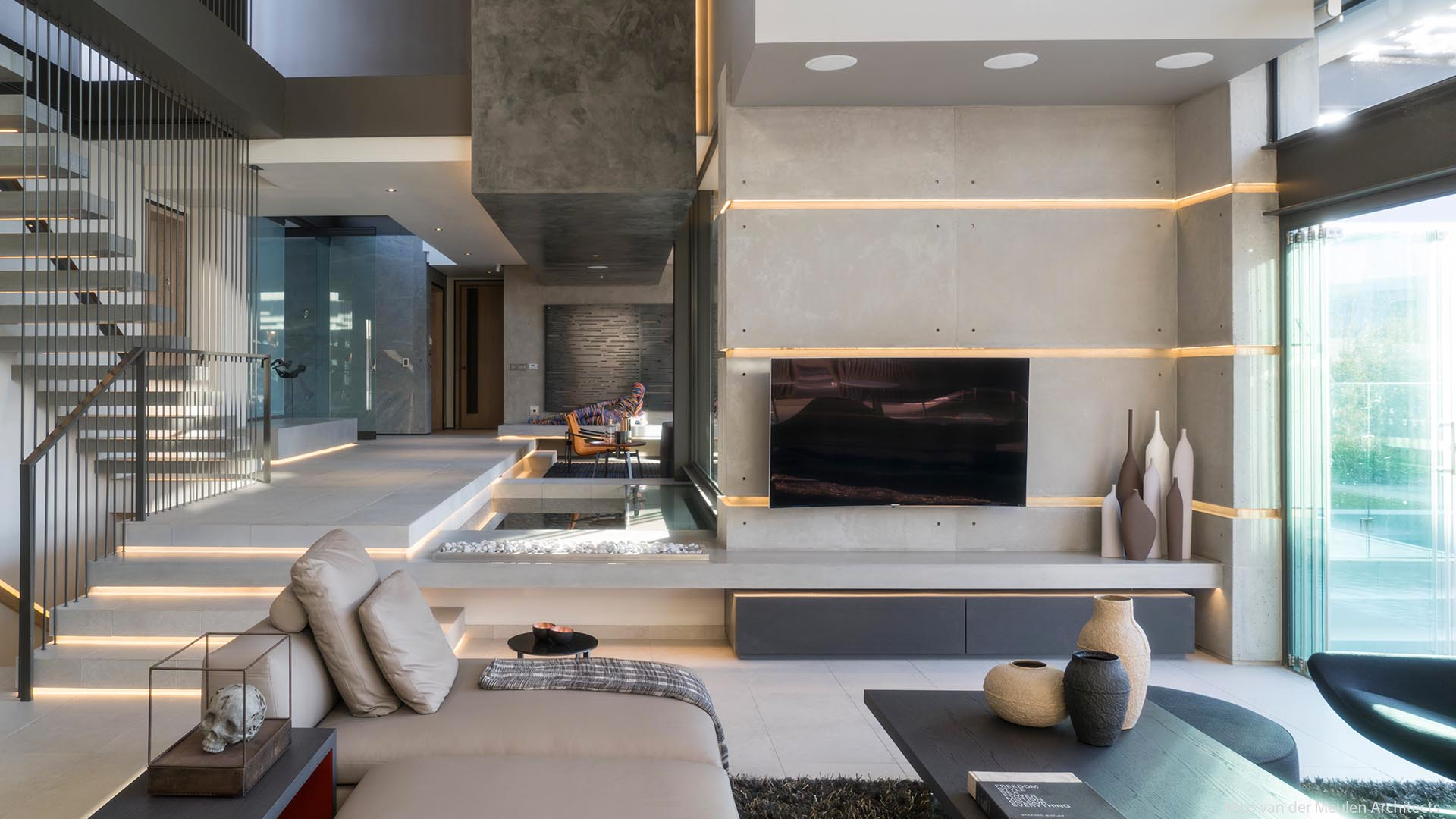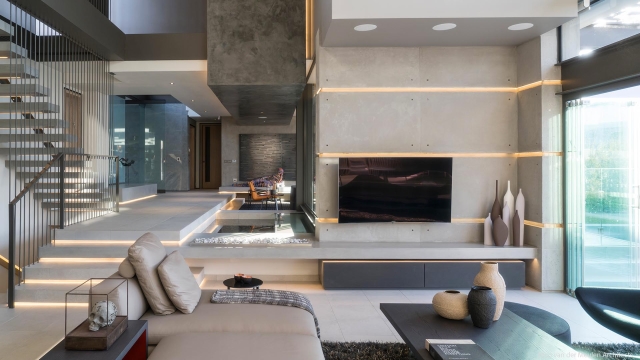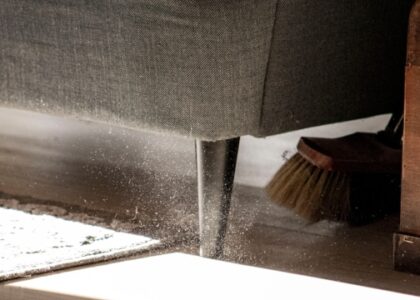In the realm of creating spaces that captivate and inspire, the fusion of architecture and interior design stands as an exquisite art form. As the lines between the two disciplines blur, a harmonious relationship emerges, elevating the experience of the built environment to new heights. Architecture, with its grandeur and structural prowess, lays the foundation, while interior design adds the finishing touches, infusing personality and functionality into every corner.
At its core, architecture embodies strength, rigidity, and a mastery of form. It encompasses the fundamental principles of design, shaping the physical structures that surround us. From towering skyscrapers that grace the urban skyline to humble dwellings that become homes, architecture sets the stage for human activity, deconstructing the boundaries between the indoors and the outdoors. The way light filters through windows, the arrangement of walls, and the angles at which spaces intersect – each element contributes to an overall vision, seamlessly interweaving aesthetics and practicality.
Yet, the story does not end there. Interior design emerges as a pivotal force in transforming spaces from mere structures to inviting sanctuaries. It breathes life into empty shells, capturing the essence of style, comfort, and personal expression. Interior designers meticulously curate colors, textures, materials, and furniture arrangements to evoke a distinct mood and atmosphere. They create spaces that not only gratify our visual senses but also nurture our emotional well-being, blending beauty with functionality in a delicate dance.
The synergy between architecture and interior design is evident in the most awe-inspiring spaces. When the fluid lines of a building’s exterior are mirrored within its interiors, a sense of coherence is born. The chosen color palettes harmonize effortlessly, and each element, whether it be a sculptural piece or a meticulously positioned lighting fixture, serves a purpose in the overall composition. The end result is an immersive experience that envelops all who enter, a testament to the successful fusion of form and function.
As we delve into the captivating world of architecture and interior design in this article, we embark on a journey that uncovers the intricate relationship between these two intertwined disciplines. We shed light on the transformative power they possess and explore the limitless possibilities that arise when they collaborate, crafting spaces that not only resonate with individuals but also shape our collective human experience. Prepare to be inspired as we unravel the artistry that emerges when form meets function, and aesthetics intertwine with purpose.
The Role of Architecture in Interior Design
Architecture and interior design are two inseparable disciplines that contribute to the creation of harmonious and functional spaces. While interior design focuses on the aesthetics, functionality, and arrangement of furniture, accessories, and color schemes within a space, architecture provides the foundation upon which these elements are built.
In the realm of interior design, architecture serves as the backbone, dictating the overall layout and structure of a building. It determines the size and shape of rooms, the placement of doors and windows, and the flow of space. Architects consider factors such as natural light, ventilation, and structural integrity when designing a building, which ultimately influences the potential of the interior design.
The architectural style of a building also greatly impacts the interior design. Whether it’s a modern, minimalist structure or a traditional, ornate one, the architecture sets the tone for the interior design choices. For example, a contemporary building with open floor plans and large windows encourages a more airy and light-filled interior design approach, while a historic building with intricate detailing might inspire a more classic and ornamental interior design style.
Additionally, architecture plays a crucial role in creating a sense of cohesion between the exterior and interior of a building. The design elements used on the exterior façade can be translated into the interior design, creating a seamless transition and a cohesive aesthetic experience for occupants and visitors alike.
In conclusion, architecture provides the framework and foundation for interior design to flourish. It determines the layout, style, and overall atmosphere of a space, shaping the possibilities for interior designers to create functional and aesthetically pleasing environments. The interplay between architecture and interior design exemplifies the fusion of form and function, resulting in spaces that are not only visually captivating but also practical and purposeful.
The Intersection of Aesthetics and Functionality
The harmony between architecture and interior design lies in their ability to seamlessly merge aesthetics and functionality, creating spaces that are both visually appealing and practical. With careful consideration and ingenuity, designers are able to strike a delicate balance between form and purpose.
In architecture, aesthetics play a crucial role in defining the overall appeal of a building. The exterior design sets the tone for what lies within, captivating onlookers and inviting them to explore further. From the captivating curves of modern skyscrapers to the timeless elegance of historical landmarks, architecture has the power to evoke emotions and make a lasting impression.
The interior design of a space takes this aesthetic vision a step further by focusing on the functionality and usability of the area. It is the art of creating environments that not only look stunning but also serve a purpose. Whether it’s designing a cozy living room that maximizes comfort or a sleek office space that enhances productivity, interior designers carefully consider the needs and desires of the occupants.
When these two disciplines converge, the result is a harmonious fusion of form and function. The architectural elements provide a strong foundation, while the interior design elements enhance the space’s functionality. The strategic placement of windows allows natural light to flood in, improving the ambiance and reducing the need for artificial lighting. Thoughtful selection of materials and colors can create an illusion of space in smaller areas or provide warmth and coziness in larger ones — all while maintaining the overall aesthetic vision.
In conclusion, the intersection of aesthetics and functionality is where architecture and interior design find common ground. By seamlessly blending form and purpose, designers are able to create spaces that are not only visually stunning but also highly functional. The fusion of these two disciplines is what truly brings a space to life, transforming it into a place that not only looks beautiful but also serves its intended purpose effectively.
Case Studies: Celebrating Successful Architectural-Interior Design Collaborations
In the world of architecture and interior design, successful collaborations between architects and interior designers are vital in creating spaces that seamlessly merge form and function. Let’s take a closer look at three case studies that exemplify the harmony achieved through such collaborations.
-
The Guggenheim Museum, Bilbao: Frank Gehry’s iconic architectural design, characterized by its curvaceous forms and titanium panels, perfectly complements the interior design envisioned by Juan Ignacio Vidarte and his team. The fluidity of Gehry’s exterior continues inside, with Vidarte’s selection of materials, colors, and furnishings enhancing the overall aesthetic experience of the museum. The result is a space where architecture and interior design coexist to showcase the artworks in a captivating and harmonious manner.
-
The Sydney Opera House: Jørn Utzon’s visionary architectural masterpiece wouldn’t be complete without the contributions of interior designer Jan Utzon, the son of the architect himself. Jan Utzon’s understanding of his father’s design intent allowed him to create interior spaces that harmonize with the iconic sail-like exterior. From the warm, natural materials to the placement of furniture and fixtures, every design decision made echoes the fluidity and elegance of the building’s architecture, enhancing the overall experience of this renowned cultural venue.
-
Casa Batlló, Barcelona: Antoni Gaudí’s whimsical architectural style is seamlessly integrated with the interior design of Casa Batlló, thanks to the collaborative efforts of Gaudí himself and designer Josep Maria Jujol. The curvilinear forms and vibrant colors of Gaudí’s exterior are echoed throughout the interior, with Jujol’s intricate details and unique furniture designs enhancing the overall spatial experience. This collaboration between architecture and interior design creates a magical and immersive environment that showcases Gaudí’s genius in every corner of the house.

These case studies demonstrate that when architects and interior designers collaborate effectively, the fusion of form and function can reach new heights. The successful combination of architectural and interior design elements brings spaces to life, elevating the overall experience for those who interact with them.






